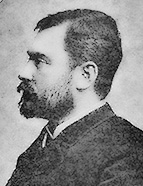

Another example of the diversity of perspectives he adopts can be seen in Portugal Contemporâneo (1880), a vast fresco on the recent past (1826 to c. 1870). Based on a wide range of sources (periodical press, political speeches, travel books, pamphlets, posters, etc.), the work combines diverse forms of writing, from chronicles of events centred on significant historical figures—such as those that open Book I—to essays offering deep reflections on Portuguese society and its history, as well as historical narratives and anthropological insights of considerable interest. Particularly noteworthy in this regard are the observations on the matriarchal structure of Minho society, made in connection with the popular revolt of Maria da Fonte: “the woman governs the house and the husband; she surpasses the man in audacity, cunning, and strength; she ploughs the fields and carries loads of corn, leading the little oxen,” contrasting “the cheerful, almost ironic gaze of the lively, gold-adorned young woman” with “the soft features of the boy, leaning on his staff, contemplative, submissive, as though before an idol” ( Portugal Contemporâneo , III, p. 52). In this work, as in other historical writings, the multiplicity of perspectives and his remarkable critical capacity for social understanding are evident throughout. Particularly interesting in this seminal work is its partial focus on a period the author had either lived through or known directly, or through the memories of those close to him. Thus, it integrates both knowledge and primary memory of events (at least the more recent ones, from the 1860s) with extensive documentary research and broader study. The first edition’s valuable statistical tables, unfortunately removed in later editions, are testament to this.
Oliveira Martins’s work also reflects an important 19th-century debate: is history a science or an art? In 1879, the historian embraced a concept of history as science, but by 1881, he had rejected this notion, instead characterising history as a field of indeterminacy: “of imagination that sees, intuits, and anticipates with an intuitive power, capable only of reproducing synthetically the reality of living things” (“Da natureza e do lugar das ciências sociais” [On the Nature and Place of the Social Sciences], Literatura e filosofia [Literature and Philosophy], pp. 336–337). He classified history as a “narrative, literary art” that “narrates and paints, [while] philosophy defines and explains.” Martins rejected determinism, arguing that the course of events does not follow a system of laws (although cause-effect relationships can sometimes be discerned). However, “nothing (…) is permanent or fixed in the succession of causes, and therefore it becomes impossible to follow a systematic deduction.” The comparison between the succession of facts and the course of a river on a geographical map used by the historian illustrates this view:. c ontinuity is disrupted “by the accidents of the riverbed, yet always directed by the general inclination of the basin through which it flows.” This does not preclude the historian from uncovering and defining “influences and relationships, causes and effects (…), trends, through a fortunate alliance of reasoning and intuition” ( Idem , p. 338). He also acknowledged that the observation of humanity’s rational creations, particularly in the realm of ideas, enables a “science of the rational and organic development of society,” which he termed “nomology” (“Teoria…”, p. 6). In any case, by 1884, his position was unequivocal: given the diversity of experiences among different human communities, history cannot be taken as a systematic science; it is, instead, a narrative. Thus , it would be impossible to reduce all these experiences to a “systematic whole.” This warning remains highly relevant today, especially when considering the possibilities of global history.
This work is financed by national funds through FCT - Foundation for Science and Technology, I.P, in the scope of the projects UIDB/04311/2020 and UIDP/04311/2020.
